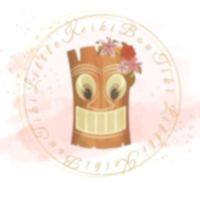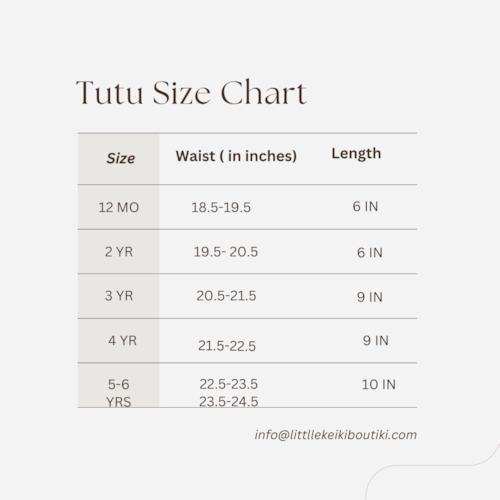Selecting the right-sized baby attire for your little one may initially seem straightforward. After all, baby clothes are usually categorized by age, implying that you can simply purchase items that match your baby's age. However, in practice, it's not always that simple. Just like adults, infants vary in terms of their shapes and sizes. Furthermore, different brands of baby clothing do not consistently adhere to the same sizing standards.
If you find yourself perplexed by the world of baby clothing sizes, you're not alone. To assist you when shopping for or arranging your baby's wardrobe, here are some key considerations to bear in mind.
The Significance of Choosing the Correct Size for Baby Clothing
Selecting the right size for your baby's clothing is of paramount importance. It directly impacts your baby's comfort and overall well-being. Ill-fitting garments can lead to discomfort, hinder your baby's movement, and even have adverse effects on their development.
Moreover, if you purchase clothing that is too small for your baby, they will outgrow them rapidly, resulting in frequent shopping excursions and unnecessary expenses. On the other hand, clothing that is excessively large can present safety hazards, such as tripping over oversized pants or sleeves covering their hands.
Balancing comfort, functionality, and proper fit is crucial when choosing baby clothes.
A Comprehensive Look at the Baby Clothes Size Chart
To assist parents in navigating the world of baby clothing sizes, a baby clothes size chart serves as a valuable tool. This chart offers a general guideline for selecting the appropriate size based on factors like age, weight, and height.
However, it's vital to recognize that every baby is unique and may deviate from the average measurements. Typically, the size chart encompasses a range from preemie to 24 months, each associated with specific age ranges, weights, and lengths.
To ensure accuracy, consulting the size chart provided by the brand you intend to purchase from is essential, as sizing can vary between brands.

Tutu Size Chart
These are Ballerina length tutus so they are short and fluffy
This chart outlines the waist measurement range and the corresponding tutu length for each age group.
Comprehending Baby Clothes Sizing
When it comes to baby clothing sizes, there are several factors to consider, including age, weight, and height. Let's delve into each of these factors:
Age-Based Sizing: One common method for sizing baby clothes is by age, categorizing clothing into newborn, infant, and toddler sizes based on the child's age in months or years. However, it's essential to remember that babies grow at their own pace, so age-based sizing may not always align with your baby's actual size. Sizing up when unsure is recommended, as babies tend to grow rapidly, and slightly larger clothing can be adjusted or rolled up if necessary.
Weight-Based Sizing: In addition to age, weight is another factor utilized to determine baby clothing sizes. Many brands base their sizes on average baby weight within a given age range. This weight-based approach offers a more personalized fit, considering individual variations in baby sizes.
Height-Based Sizing: Some brands, particularly those adhering to European sizing standards, utilize height rather than age for sizing. European baby clothes size charts are labeled in centimeters, indicating the maximum height for each size. This approach provides a more precise fit, considering the length of the baby.
Gender-Based Sizing: Gender-based sizing considers the design and style of baby clothes for boys or girls. Although this doesn't necessarily affect actual measurements, it caters to gender-specific style preferences.
Measuring Your Baby for Clothing
Accurate measurements are key to finding the perfect fit for your baby's clothes. Here's how to measure your baby:
Tools Needed: To measure your baby, you'll need a tape measure or ruler, a soft measuring tape (preferably fabric or flexible), and a willing assistant for accurate measurements.
Taking Accurate Measurements:
1. Lay your baby on a stable surface, like a changing table or bed.
2. Ensure your baby is calm and relaxed to minimize movement.
3. Measure their length from head to feet using the soft measuring tape. This measurement indicates their height.
4. Weigh your baby using a baby scale or by weighing yourself with and without your baby, then subtract your weight.
5. Record measurements in inches or centimeters based on the brand's size chart.
Using the Baby Clothes Size Chart
Once you have your baby's height and weight measurements, consult the brand's size chart. This chart helps you choose the right size based on your baby's measurements. Keep in mind that different brands may have slight variations in sizing, so it's wise to check the brand-specific size chart before making a purchase. Additionally, reading customer reviews can provide insights into how a particular brand's clothing fits.
Tips for Buying Baby Clothes
With accurate measurements and knowledge of baby clothes sizes, you're ready to shop for your baby. Here are some tips to consider:
Shop in Advance: Babies grow quickly, so shop ahead to prepare for their growth spurts and avoid last-minute shopping stress.
Consider the Season: Select clothing appropriate for the season and climate to ensure your baby's comfort and safety.
Check the Material: Opt for soft, natural fabrics like cotton for your baby's comfort. Avoid materials that may cause irritation or allergies.
Buy a Mix of Sizes: Babies grow at different rates, so having a range of sizes in their wardrobe accommodates their growth.
Common Questions about Baby Clothes Sizes
Parents often have questions about baby clothing sizes:
Falling Between Two Sizes: When your baby's measurements fall between two sizes, choose the larger size for room to grow.
Buying Slightly Bigger: Purchasing clothes a bit larger is a good idea, but avoid clothes that are excessively oversized.
Checking Size Regularly: Babies grow rapidly, so measuring their height and weight every couple of months helps maintain a well-fitted wardrobe.
Conclusion
Selecting the right baby clothes size may appear daunting, but with accurate measurements, brand-specific size charts, and the provided insights, you can outfit your baby comfortably and accommodate their growth. Remember, a content baby brings joy to parents!


